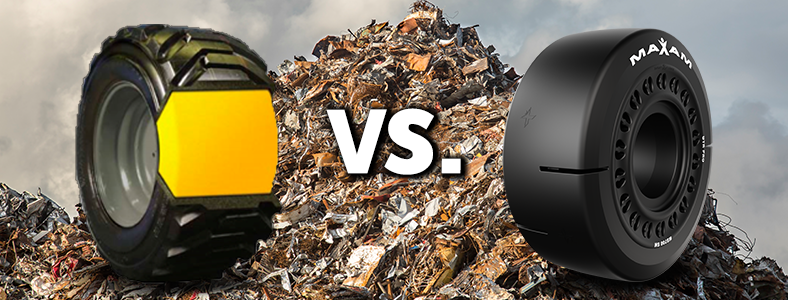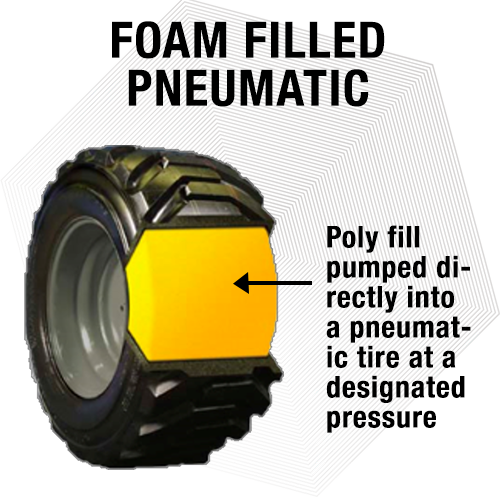
What is the difference between foam-filled tires and solid rubber tires?
Polyurethane foam filling method has been around since the early 1970s. Poly fill is composed of a two-part liquid polymer A and B, they are pumped directly into a pneumatic tire at designated pressure. This was before solid off-the-road tires were invented and it was a way to deal with tires being punctured on tougher jobs at waste and recycling, and scrap metal yards.
There are some pros of foam-filling your pneumatic tires:
- Cheaper in the short term than solid OTR tires
- Ride may be softer compared to some solid OTR tires
Disadvantages of foam-filled tires include:
- Foam-filled tires have a single use life span
- Sidewall tears eventually will cause failure since the poly will revert
- Combination of tire/wheel/poly fill is costly
- Special equipment required to dismount poly assemblies

Solid rubber tires may be pricier than foam-filling pneumatic tires, however, in long term, they surpass foam-filled tires. Pros of solid tires:
- Zero maintenance
- Zero downtime
- Puncture proof sidewall
- Significantly lower cost-per-hour compared to foam-filled tires
- Work with existing wheels on your wheel loaders
- Rubber compound can be manipulated based on application
While solid rubber tires are harder than foam-filled pneumatics, manufacturers are able to engineered solid OTR tires to be soft enough to offer a nicer ride for the operator.
When deciding between foam filled or solid OTR tires, consider what your operation prioritizes and calculate the long-term cost accordingly.



